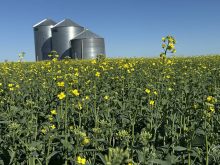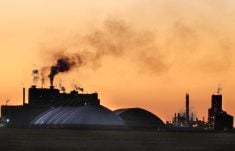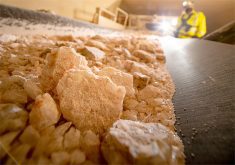A University of Manitoba researcher admits that liquid from earthen manure lagoons is seeping into the soil.
However, Rebecca McMillan of the university’s civil and geological engineering department said it’s only seeping a few centimetres a year – so slowly that it would take decades or centuries to reach aquifers below.
McMillan took core samples beneath three earthen manure lagoons in eastern Manitoba and the Interlake region to measure for chloride and ammonium levels.
Chloride is a common marker used to trace how fast surface water seeps into underlying soils. Ammonium can, in the right conditions, produce nitrates, which can cause nitrification of soils.
Read Also

VIDEO: Catch up with the Western Producer Markets Desk
The Western Producer Markets Desk provides daily updates on agricultural markets, with recent video commentary including looks into canola, wheat, cattle and feed grains.
She discovered that chloride was trickling down through the soils at between five and 20 centimetres per year.
Depending on the depth of the aquifers and the nature of the soil, that meant the chlorides wouldn’t reach the aquifers for 50 years in one case, and 200 years in another.
That could be slowed or stopped if the source of liquid manure above was cut off.
“If you continue to pump in that source for the next 200 years, then you might get that maximum content of chloride into the aquifer,” McMillan said in an interview during the Livestock Options for the Future conference held in Winnipeg on June 26-27.
“But as soon as (the manure source) stops, you start to see a decline in chloride concentrations.”
She also found little evidence of nitrification of soils beneath lagoons. She did not, however, examine soil beside lagoons to see if nitrification had occurred there.
She said lagoons and soils in southwestern Manitoba should also be studied because of the different soil conditions.
McMillan said she plans to research those aspects in the future.
She did not take a stand on whether the seepage she documented verified that lagoons seep only slowly and pose little threat, or if they are an environmental time bomb that will explode in future generations’ hands.
“Whether or not that’s safe is not up to me.”















